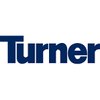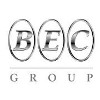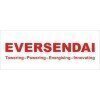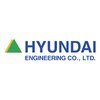Filter interviews by
Turner & Townsend Interview Questions and Answers
6 Interview questions
Statutory compliance refers to the legal requirements organizations must adhere to in their operations.
Includes labor laws, tax regulations, and environmental laws.
Example: Compliance with the Occupational Safety and Health Administration (OSHA) standards.
Example: Adhering to the Fair Labor Standards Act (FLSA) regarding minimum wage and overtime.
Involves regular audits and reporting to ensure adherence.
Failure to...
I manage safety at workplace by implementing safety policies, conducting regular inspections, providing training, and promoting a safety culture.
Implementing safety policies and procedures
Conducting regular safety inspections and audits
Providing safety training to employees
Promoting a safety culture through communication and recognition programs
Maintain professionalism and politely decline the gifts to avoid any conflicts of interest.
Politely thank the contractor for the gesture but explain that company policy prohibits accepting gifts.
Suggest alternative ways the contractor can show appreciation, such as writing a thank-you note or providing feedback on their work.
If the contractor insists on giving a gift, inform a supervisor or HR department for furth...
RIBA Plan of Work is a framework used in the construction industry to outline the stages of a building project.
RIBA stands for Royal Institute of British Architects
It consists of 8 stages from inception to completion
Each stage has specific tasks and deliverables
It helps in organizing and managing the construction process efficiently
Cost plans & Qty take off are essential for project budgeting and tracking progress.
Cost plans outline the estimated expenses for each stage of the project.
Quantity take off involves determining the quantities of materials needed for each stage.
Both cost plans and quantity take off help in budgeting, cost control, and tracking project progress.
Examples: creating a cost plan for the construction phase, performi...
Measurement systems include traditional, metric, and imperial units.
Traditional measurement system is based on customary units used in the US
Metric system is based on the International System of Units (SI)
Imperial system is used in the UK and includes units like pounds and inches
Turner & Townsend Interview Experiences
8 interviews found
I applied via LinkedIn and was interviewed in Sep 2023. There were 3 interview rounds.
(1 Question)
- Q1. Current job description
(1 Question)
- Q1. How do you manage safety at workplace?
- Ans.
I manage safety at workplace by implementing safety policies, conducting regular inspections, providing training, and promoting a safety culture.
Implementing safety policies and procedures
Conducting regular safety inspections and audits
Providing safety training to employees
Promoting a safety culture through communication and recognition programs
(1 Question)
- Q1. How do you manage the workforce to implement safety smoothly?
- Ans.
I manage the workforce by setting clear safety expectations, providing training, conducting regular inspections, and rewarding safe behavior.
Set clear safety expectations for all employees
Provide regular safety training to ensure all employees are aware of safety protocols
Conduct regular safety inspections to identify and address any potential hazards
Reward and recognize employees who demonstrate safe behavior
Encourage...
I appeared for an interview before Apr 2024, where I was asked the following questions.
- Q1. What is Zero budget
- Ans.
Zero budgeting is a financial management approach where all expenses must be justified for each new period.
Every budget cycle starts from a 'zero base', requiring justification for all expenses.
Encourages cost management and prioritization of projects based on necessity.
Example: A company may eliminate a project that no longer aligns with strategic goals.
Promotes accountability as managers must defend their budget requ...
- Q2. Do you know about statuary compliances.
- Ans.
Statutory compliance refers to the legal requirements organizations must adhere to in their operations.
Includes labor laws, tax regulations, and environmental laws.
Example: Compliance with the Occupational Safety and Health Administration (OSHA) standards.
Example: Adhering to the Fair Labor Standards Act (FLSA) regarding minimum wage and overtime.
Involves regular audits and reporting to ensure adherence.
Failure to comp...
Interview Preparation Tips
I applied via Campus Placement and was interviewed in Aug 2023. There were 2 interview rounds.
(1 Question)
- Q1. What is Riba Plan of Work
- Ans.
RIBA Plan of Work is a framework used in the construction industry to outline the stages of a building project.
RIBA stands for Royal Institute of British Architects
It consists of 8 stages from inception to completion
Each stage has specific tasks and deliverables
It helps in organizing and managing the construction process efficiently
(1 Question)
- Q1. How would I deal with contractor if he is giving me gifts during festivals?
- Ans.
Maintain professionalism and politely decline the gifts to avoid any conflicts of interest.
Politely thank the contractor for the gesture but explain that company policy prohibits accepting gifts.
Suggest alternative ways the contractor can show appreciation, such as writing a thank-you note or providing feedback on their work.
If the contractor insists on giving a gift, inform a supervisor or HR department for further gu...
I applied via Referral and was interviewed before Dec 2023. There was 1 interview round.
(1 Question)
- Q1. What are your salary expectations?
- Ans.
My salary expectations are based on my experience, skills, and the industry standard for this position.
Research industry standards for Project Assistant salaries
Consider my level of experience and skills
Factor in the cost of living in the area where the job is located
Be open to negotiation based on the overall compensation package offered

(2 Questions)
- Q1. Cost plans & Qty take off at each stage
- Ans.
Cost plans & Qty take off are essential for project budgeting and tracking progress.
Cost plans outline the estimated expenses for each stage of the project.
Quantity take off involves determining the quantities of materials needed for each stage.
Both cost plans and quantity take off help in budgeting, cost control, and tracking project progress.
Examples: creating a cost plan for the construction phase, performing qu...
- Q2. Cost reports & Quantity estimation
Interview Preparation Tips
I appeared for an interview before Jun 2024, where I was asked the following questions.
- Q1. Mostly asking from Indian Standard Codes
- Q2. Project Management
I appeared for an interview before May 2024, where I was asked the following questions.
- Q1. Quantification, Rate analysis & Cost Management
- Q2. Change order Management, cost control & cost reporting
I applied via Referral and was interviewed before Apr 2020. There were 3 interview rounds.
Interview Questionnaire
1 Question
- Q1. Different type of measurement systems
- Ans.
Measurement systems include traditional, metric, and imperial units.
Traditional measurement system is based on customary units used in the US
Metric system is based on the International System of Units (SI)
Imperial system is used in the UK and includes units like pounds and inches
Interview Preparation Tips
Top trending discussions






Interview questions from similar companies

Manager Costing Interview Questions & Answers
Turner Constructionposted on 23 Jul 2023
I applied via Walk-in and was interviewed in Jun 2023. There were 3 interview rounds.

(2 Questions)
- Q1. About contracts related qtns
- Q2. Cost related qtns and cost per sqft
(2 Questions)
- Q1. Why want to shift or change the job
- Q2. Where you see u I’m next 5 years

Intern Interview Questions & Answers
China State Construction Engineering Corporationposted on 15 Jul 2024
I applied via Approached by Company and was interviewed in Jun 2024. There was 1 interview round.
(2 Questions)
- Q1. Tell me about yourself
- Ans.
I am a motivated student with a passion for technology and problem-solving, eager to contribute and learn in a dynamic internship environment.
Currently pursuing a degree in Computer Science, focusing on software development.
Completed a project on web application development using React and Node.js.
Interned at XYZ Company, where I assisted in debugging and improving existing software.
Active member of the university codi...
- Q2. What do you know about our company
Interview Preparation Tips
Turner & Townsend Interview FAQs
Tell us how to improve this page.
Turner & Townsend Interviews By Designations
- Turner & Townsend Manager Costing Interview Questions
- Turner & Townsend Assistant Costing Manager Interview Questions
- Turner & Townsend Project Assistant Interview Questions
- Turner & Townsend Assistant Manager Interview Questions
- Turner & Townsend HSE Manager Interview Questions
- Turner & Townsend Senior Project Manager Interview Questions
Interview Questions for Popular Designations
- Team Lead Interview Questions
- Analyst Interview Questions
- Software Developer Interview Questions
- Sales Executive Interview Questions
- Graduate Engineer Trainee (Get) Interview Questions
- Associate Software Engineer Interview Questions
- Senior Software Engineer Interview Questions
- Manager Interview Questions
- Show more
Overall Interview Experience Rating
based on 6 interview experiences
Difficulty level
Duration
Interview Questions from Similar Companies
Turner & Townsend Reviews and Ratings
based on 97 reviews
Rating in categories
8-10 Yrs
Not Disclosed
8-10 Yrs
Not Disclosed
3-6 Yrs
₹ 5.5-9 LPA
|
Manager Costing
107
salaries
| ₹8 L/yr - ₹14.9 L/yr |
|
Project Manager
86
salaries
| ₹6 L/yr - ₹21 L/yr |
|
Assistant Costing Manager
75
salaries
| ₹5.5 L/yr - ₹9 L/yr |
|
Assistant Project Manager
71
salaries
| ₹5 L/yr - ₹11 L/yr |
|
Senior Project Manager
46
salaries
| ₹12.6 L/yr - ₹26 L/yr |

Bahwan Engineering

Eversendai

Descon Engineering

Military Engineer Services
- Home >
- Interviews >
- Turner & Townsend Interview Questions












